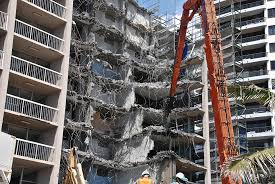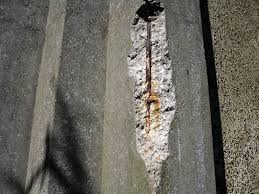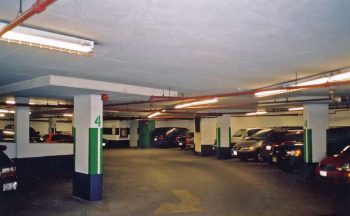 June 2021
June 2021
Concrete structures can survive hundreds of years while concrete high-rise buildings suffer from problems foreign to these much older structures.
Steel reinforcement is a 19th century innovation. Rebar, short for reinforcing steel bars, were added to concrete for strength. They allowed for the creation of long structures like bridges and thinner structures that include high-rise buildings. These steel reinforced structures require less concrete thus speeding up construction.
Steel reinforced structures were expected to last as long as 1,000 years. In practice the lifespan is closer to 50 –100 years if properly maintained.
Steel reinforced concrete structures begin to deteriorate in as little as ten years. Hidden steel is difficult to protect against rust and corrosion. Moisture enters through tiny cracks in concrete and creates an electrochemical reaction. Metal bars within the concrete act like a battery in that they store power used to transform iron into rust. Rust expands the rebar, increasing the size and number of cracks, and forces concrete to separate in a process called spalling. The entire process is Concrete Cancer.
A well-maintained building requires minimal maintenance to repair concrete damage. Repairs to a poorly maintained building costs considerably more.
 Early detection and repair of damage allows for minor repairs less likely to disrupt residents. An underground garage severely damaged by salt can take two or more years to repair. Parking spaces may be inaccessible. Above ground paving and landscaping may have to be removed to rebuild the garage. Residents have to deal with jackhammering and other construction noises reverberating throughout a building for the duration of repairs.
Early detection and repair of damage allows for minor repairs less likely to disrupt residents. An underground garage severely damaged by salt can take two or more years to repair. Parking spaces may be inaccessible. Above ground paving and landscaping may have to be removed to rebuild the garage. Residents have to deal with jackhammering and other construction noises reverberating throughout a building for the duration of repairs.
- Stop damage at the source by preventing water from penetrating concrete. There are various approaches depending on where water is penetrating and extent of damage. A Building Science specialist can advise on how to identify and address concerns.
- Salt, which damages concrete, accumulates in parking garages as runoff down ramps and ice melting off vehicles. Clean garage floors to prevent salt build-up. Ensure drains are not plugged allowing salt to drain away. Prevent puddles from appearing on deteriorating concrete slabs by repairing existing damage.
- If your community has a salt water swimming pool, check for leaks which can introduce salt to the interior of a building. Check areas around the pool including change rooms and walking areas to verify salt has not penetrated through to concrete and concealed rebar.







